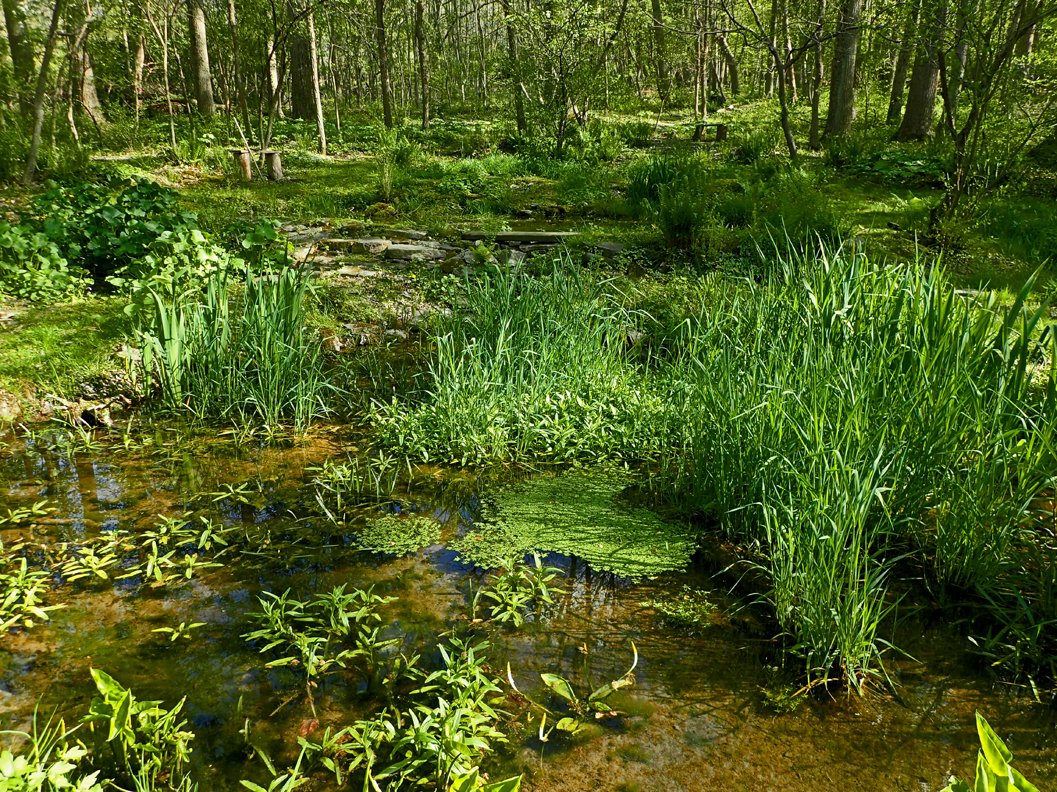Every spring there is a “competition” to see which plant is the first to send up an actual blooming flower. Putting aside Skunk Cabbage (a winter bloomer), the two plants first to bloom in spring are Hepatica and Blood Root.


Hepatica usually has the advantage as their leaves can stay green during the winter, giving them the benefit of being able to photosynthesize during mild winter periods.
Blood Root sends up a large white flower before their leaves unfurl by using stored energy from the previous season. So when there is prolonged snow cover, Blood Root may be the first to bloom.
The ½ to 1-inch-wide Hepatica flowers have a number of white, pink, purple, or blue flowers that may last for a few weeks, while Blood Root flowers only last a few days before the petals fall to the ground.
Come late March and early April things really begin to shift into high gear. Next stepping up to the stage are the yellow brigade: Golden Ragwort, Wood Poppies, and the Marsh Marigolds hold court in the Springs area.



Rue Anemones also come into their own at this time carpeting the woodland floor with their blooms in various shades of pink to white.


They die back in mid-summer, making them true spring ephemerals.
Trout Lillies, Cut-leaf Toothwort, and Dutchman’s Breeches also grace us with their delicate ephemeral blooms. They will all be finished for the season by the time the overhead deciduous trees leaf out.



Next up are the Wood Frogs. After the first warm rainy period of the new season, male wood frogs travel from nearby woodlands and gather at the ponds, all calling in their unique quacking cacophony. Their loud intermingled calls resound like a flock of over-excited ducks and can be heard from more than an acre away.
The outnumbered females show up a few days later. Males joust for their attention and the small number of females are quickly beleaguered by mates. In a few days this amphibian bacchanal is over, and the pond goes quiet once more.

The only clue of what conspired here are the clumps of gelatinous egg masses left behind.
Over the next few weeks, each little black dot will hatch, elongate, and start feeding on algae and detritus. They swim like long-tailed apostrophes on their journey to adult metamorphosis that hopefully will be completed before these vernal basins go dry for the summer.

Come early April, Garter snakes emerge from their winter hibernation, hungry.

The amazing transformation is now under way, from drab grey to green, and from green to all colors imaginable. Let the dynamic seasons begin!
Next up: Late Spring.

